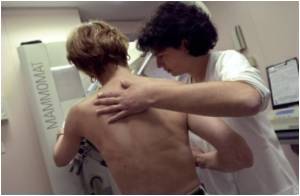
The potential contribution of stroma cells to tumour growth has been widely recognised. It is not easy to understand whether a diseased stroma state supports tumour initiation or, alternatively, tumour- stroma cells are responsible for the formation of such diseased stroma. "We successfully identified relevant players as such and analysed these molecules out of human tissue samples for the very first time", says Christopher Gerner, head of the Department of Analytical Chemistry of the University of Vienna. Together with Georg Pfeiler from the Department of Obstetrics and Gynecology of the Medical University of Vienna and an interdisciplinary research team, he has developed the new analysis methodology.
Experimental determination of undesirable tumour promotion by stroma cells
Tissue is made of various cell types, which fulfil different biological tasks. Main components of breast tissue are epithelial cells and fibroblasts. In case of breast cancer, the epithelial cell may transform while the fibroblasts, remaining genetically unaltered, may change their activation state. The typical activity of cancer associated fibroblasts (CAFs) is similar to wound healing activities. The secreted growth- and survival factors, biologically active at extremely low concentrations, are not only supporting wound healing, but may as well be exploited in case of cancer for further promotion of the disease. The significance of such cell activities has been fully acknowledged only during the last few years, the current study also presents a relevant in vitro model for more detailed investigations.
Innovative assay based on mass spectrometric analyses of needle biopsies
It was a real analytical challenge to identify the most relevant molecular players out of tissue homogenates which consist of a complex mixture of different kinds of cells together with countless blood constituents. By the use of modern mass spectrometry several thousand distinct proteins were identified in a first step. Referring to the in vitro model systems mentioned above, it was finally possible to investigate the functional cell state of fibroblasts out of tissue homogenates. This successfully proved that in case of cancer, the fibroblasts display a strong wound healing activity and thus directly promote tumour growth. "This was only possible due to the modern instrumentation I got together with the chair in Bioanalysis", remarks Christopher Gerner referring to the top instruments in the Mass Spectrometry Center of the University of Vienna.
Advertisement














